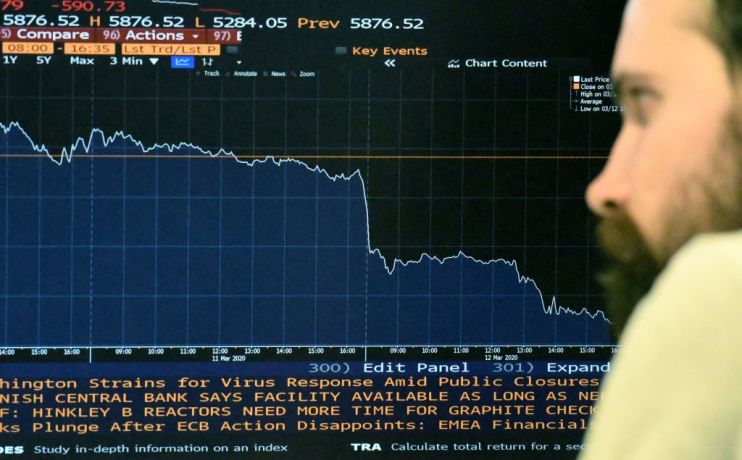Is there any method to the market’s madness?

“Unprecedented” has been the most overused phrase to describe this year’s events. “Mystifying”, however, might be the word a visitor from Mars would use to describe some of 2020’s market moves.
The world economy is set to see the largest contraction since the Second World War, and the UK the largest fall in economic activity since the Great Frost of 1706. Yet equity markets have now recovered almost all of their collapse in February/March.
Just as the sharpness of the drop was almost without precedent, so too is the speed of the subsequent recovery.
Global equities are in fact now trading at their highest valuation in close to 20 years. Given that the value of a company ultimately depends on its earnings, this looks very odd at first sight, with earnings being hammered by the economic downturn.
At the same time that equities have rebounded as confidence has improved, gold (the classic safe haven in times of panic) has continued its upward march and is now up some 25 per cent year to date.
This again does not seem to make much sense. And as if that isn’t enough, UK gilt yields have turned negative — even though the government is set to run a budget deficit this year of close to 20 per cent of GDP, the largest since the Second World War.
Is there a method behind this apparent market madness? Or are equities, government bonds, gold and indeed the real world all operating in their parallel universes oblivious to each other’s reality?
The starting point in reconciling these seemingly irreconcilable moves is to realise that markets are always forward looking. UK GDP may have fallen a massive 25 per cent in March and April, but it has already started to recover. The economic downturn may be one of the sharpest ever but should also be one of the shortest ever.
Investors already have their eyes firmly focused on the forthcoming rebound in corporate earnings, rather than the collapse currently being reported for the second quarter. Indeed, the consensus expects all of this year’s sharp drop in earnings to be recaptured next year.
But even if one takes into account such a fast rebound, which is far from guaranteed, the price-earnings ratio is still at a 20-year high. With the economic outlook looking pretty uncertain and hostage to developments regarding Covid-19, this doesn’t make much sense — until you take into account what has happened to interest rates.
The Bank of England and the US Federal Reserve both slashed rates to close to zero earlier this year. The lower the interest rate, the greater the current value of a company’s future earnings stream — because of the lower discount rate — and the higher the price/earnings ratio that is justified.
Very low rates are also boosting equity valuations in a more straightforward manner. They mean that government bonds are likely to see zero or even negative returns going forward, while the returns from corporate bonds should also be decidedly limited. Prospective returns for equities, by contrast, look significantly higher in the medium term.
For investors looking for income, the same holds true. The UK bank rate and the 10-year UK gilt yield are both a mere 0.1 per cent, and UK corporate bonds are yielding only 1.5 per cent. By contrast, the dividend yield on UK equities should still be some 3–3.5 per cent, even though dividend payments have been cut heavily this year.
In a nutshell, for many investors looking for a half decent return — whether they have a focus on income or capital gain — there is really no alternative to equities, and valuations are being bid up as a result.
Higher than normal equity valuations are therefore justified. That said, it is unclear they should be quite as high as they now are. Equities very much seem to be assuming a smooth return to economic normality. This leaves markets vulnerable, at least in the near term, to a correction if the recovery should be called into question.
The current super-easy monetary policy also explains the apparent paradox of the UK government being able to borrow money at a record low rate of interest at the same time as its borrowing needs have surged. In some cases, investors are actually now paying, rather than being paid, for the privilege of lending to the government.
Issuance of government debt may have soared, but interest rates are rock-bottom and central banks have been buying up the lion’s share of this debt, minimising the reliance on private investors. Central banks have also made it clear that they have no intention of raising rates any time soon. This has also helped keep a lid on government borrowing costs, and should continue to do so even if inflation does start to pick up as looks likely. Government bond yields look set to remain low for the foreseeable future — just not quite as low as they are now.
The continued strength of the gold price is also explicable by super-low rates. Government bonds, rather than gold, used to be an obvious port of call to provide some protection in portfolios in the event of a major sell-off in risky assets. Now, however, the scope for yields to fall any further is minimal and the ability for bonds to provide such protection much reduced. Furthermore, with government bonds now yielding virtually nothing, the fact that gold pays no income is no longer a particular disadvantage.
The bottom line is that markets are not as mad as they first look. Still, while there may be some method to their madness, this is a long way from saying they are behaving entirely rationally.
Main image credit: Getty